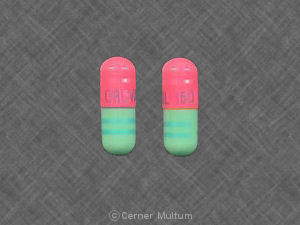Oruvail Interactions
There are 399 drugs known to interact with Oruvail (ketoprofen), along with 10 disease interactions, and 2 alcohol/food interactions. Of the total drug interactions, 100 are major, 290 are moderate, and 9 are minor.
- View all 399 medications that may interact with Oruvail
- View Oruvail alcohol/food interactions (2)
- View Oruvail disease interactions (10)
Most frequently checked interactions
View interaction reports for Oruvail (ketoprofen) and the medicines listed below.
- Acetylsalicylic Acid (aspirin)
- Advair HFA (fluticasone / salmeterol)
- Advil (ibuprofen)
- albuterol
- Alli (orlistat)
- amiloride
- amitriptyline
- amlodipine
- atorvastatin
- azithromycin
- chlorpheniramine
- cimetidine
- codeine
- duloxetine
- esomeprazole
- furosemide
- Gaviscon Regular Strength Tablets (aluminum hydroxide / magnesium trisilicate)
- mirtazapine
- Nexium (esomeprazole)
- Omega-3 (omega-3 polyunsaturated fatty acids)
- omeprazole
- Paracetamol (acetaminophen)
- prochlorperazine
- propranolol
- pyridoxine
- quetiapine
- sertraline
- Slo-Phyllin (theophylline)
- telmisartan
- Vitamin C (ascorbic acid)
Oruvail alcohol/food interactions
There are 2 alcohol/food interactions with Oruvail (ketoprofen).
Oruvail disease interactions
There are 10 disease interactions with Oruvail (ketoprofen) which include:
- asthma
- fluid retention
- GI toxicity
- rash
- renal toxicities
- thrombosis
- anemia
- hepatotoxicity
- hyperkalemia
- platelet aggregation inhibition
More about Oruvail (ketoprofen)
- Oruvail consumer information
- Compare alternatives
- Reviews (3)
- Drug images
- Latest FDA alerts (5)
- Side effects
- Dosage information
- During pregnancy
- Drug class: Nonsteroidal anti-inflammatory drugs
- Breastfeeding
Related treatment guides
Drug Interaction Classification
| Highly clinically significant. Avoid combinations; the risk of the interaction outweighs the benefit. | |
| Moderately clinically significant. Usually avoid combinations; use it only under special circumstances. | |
| Minimally clinically significant. Minimize risk; assess risk and consider an alternative drug, take steps to circumvent the interaction risk and/or institute a monitoring plan. | |
| No interaction information available. |
See also:
Further information
Always consult your healthcare provider to ensure the information displayed on this page applies to your personal circumstances.


